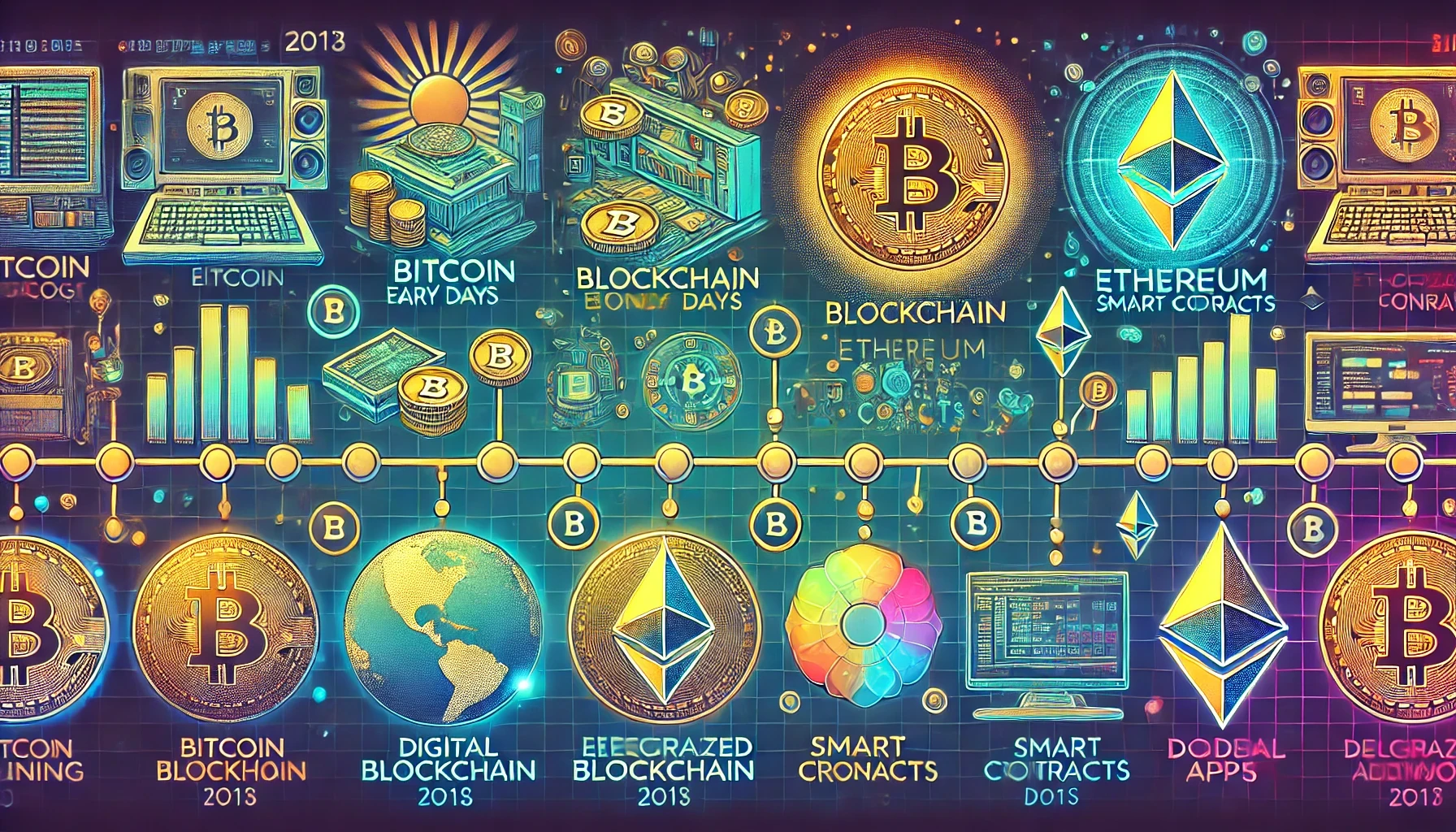1. The Birth of Blockchain: Bitcoin (2008–2009)
Satoshi Nakamoto’s Whitepaper: In 2008, an anonymous figure named Satoshi Nakamoto published “Bitcoin: A Peer-to-Peer Electronic Cash System”, introducing blockchain as a public ledger for Bitcoin transactions.
Genesis Block: The first Bitcoin block (Block 0) was mined in January 2009, marking the start of decentralized currency.
Key Innovation: Blockchain solved the “double-spend problem” without relying on banks or intermediaries.
2. Beyond Bitcoin: Ethereum and Smart Contracts (2013–2015)
Vitalik Buterin’s Vision: Ethereum, launched in 2015, expanded blockchain’s use cases by enabling smart contracts—self-executing agreements coded into the blockchain.
Decentralized Apps (dApps): Developers began building applications for finance, gaming, and governance on Ethereum.
The DAO Hack: A 2016 hack of a decentralized autonomous organization (DAO) exposed vulnerabilities, leading to Ethereum’s split into ETH and ETC.
3. Enterprise Adoption: Blockchain Goes Mainstream (2016–2020)
Hyperledger and ConsenSys: Companies like IBM and JPMorgan embraced private blockchains for supply chain tracking, finance, and data security.
Government Experiments: Countries like Estonia and Dubai piloted blockchain for digital IDs and public records.
Facebook’s Libra (Diem): A controversial attempt to create a global stablecoin, later rebranded and scaled back.
4. DeFi, NFTs, and the Rise of Web3 (2020–Present)
Decentralized Finance (DeFi): Platforms like Uniswap and Aave enabled peer-to-peer lending and trading, bypassing traditional banks.
NFT Boom: NFTs (non-fungible tokens) revolutionized digital art, collectibles, and ownership, with sales hitting $25 billion in 2021.
Web3 Vision: Blockchain is now central to the Web3 movement, emphasizing user-owned data and decentralized internet infrastructure.
5. Challenges and the Road Ahead
Scalability Issues: High fees and slow transactions (e.g., Bitcoin’s 7 TPS vs. Visa’s 24,000 TPS).
Regulation: Governments grapple with balancing innovation and preventing fraud (e.g., China’s crypto ban, EU’s MiCA framework).
Future Trends:
Layer 2 Solutions: Ethereum’s rollups and Bitcoin’s Lightning Network for faster transactions.
Interoperability: Cross-chain protocols like Polkadot and Cosmos.
Sustainability: Transition to energy-efficient consensus mechanisms (e.g., Ethereum’s proof-of-stake).
Conclusion
From Bitcoin’s humble beginnings to powering trillion-dollar ecosystems, blockchain has come a long way. While challenges like scalability and regulation remain, its potential to decentralize finance, governance, and the internet itself is undeniable. As blockchain evolves, it will continue to redefine how we trust, transact, and collaborate in a digital world.
